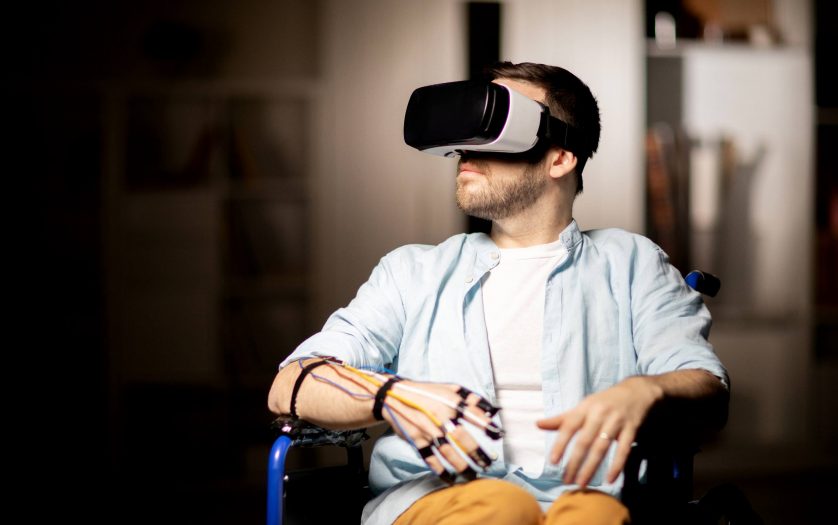Haptics in Stroke Rehabilitation
Introduction[edit | edit source]
Stroke is one of the leading causes of disability which results in minor to severe impairments. Post stroke sequelae comprises of impairments such as loss of range of motion, muscle weakness and motor deficits resulting from impaired force generation.[1] The most common impairment after stroke is reduced upper extremity function[7]. Among which, hand function is commonly impaired after stroke, strongly affecting the power to perform daily activities. Even though upper limb robotic devices are developed to enhance rehabilitation they rarely specialise in the training of hand sensorimotor function.[2]Virtual Reality-based hand rehabilitation promotes function by providing immediate, appropriate and accurate feedback through audio-visual cues.1,2 Although there is expansive evidence supporting the use of Virtual Reality in the functional recovery of stroke patients, the integration of haptic feedback is poorly studied.
Background[edit | edit source]
Contextually, the word "haptic" is derived from the Greek verb “to touch” or "to handle". Presently, it refers to the expanding subject that is associated with the study of touch through human computer interaction. The recently developed haptic technology has developed rapidly and has been the center of attention of many research communities. As a result, concerned vendors have thrived on creating haptic-related products to be deployed commercially, in development, and for research purposes, as well as serving as prototypes. Virtual environments are strongly linked with haptic-based applications. Such environments require the visual sensory channel to produce more realistic sensations. T
Virtual reality (VR) simulations, when interfaced with robots, movement tracking, and sensing glove systems, can provide an engaging, motivating environment where the motion of the limb or tool displayed in the virtual world is a replication of the motion produced in the real world by the subject.[3]
Theoretical Framework[edit | edit source]
Many different Virtual reality systems have been studied with myriad Haptic devices employed for the purpose of restoring hand function post-stroke. These devices enhance immersion through the application of vibrotactile stimulation with kinaesthetic feedback.[3] This multi-modal feedback has been theorized to improve motor control, strength, and dexterity in integration with the repetitive practice of an ecologically relevant motor task through the mechanism of neuroplasticity.3-7
Evidence on Effectiveness[edit | edit source]
Conclusions[edit | edit source]
Haptic devices enhance motor recovery post-stroke through sensory feedback. Presently such devices are unwieldy, expensive and impractical for daily clinical use. Therefore, economical, smaller and ergonomically designed Haptic devices may allow future studies to make stronger arguments for their inclusion in hand rehabilitation after stroke.
References[edit | edit source]
- ↑ J David, S Alma, T Marilyn, C Grigore, A Sergia, R Michael et al.Virtual Reality Enhanced Stroke Rehabilitation. IEEE Trans. Neural Syst. Rehabilitation Eng. 2001:3
- ↑ Ranzani R, Lambercy O, Metzger JC, et al. Neurocognitive robot-assisted rehabilitation of hand function: a randomized control trial on motor recovery in subacute stroke. J Neuroeng Rehabil. 2020;17(1):115.
- ↑ 3.0 3.1 Merians AS, Fluet GG, Qiu Q, Lafond I, Adamovich SV. Learning in a virtual environment using haptic systems for movement re-education: can this medium be used for remodeling other behaviors and actions? J Sci Technol. 2011 Mar 1;5(2):301-8.







